|
CANNIBALISM
& VULTURES
ABOUT - CLIMATE
- NATIONS -
HYDROGEN -
OCEAN PLASTIC
- WHALING
PLEASE
USE OUR
A-Z INDEX
TO NAVIGATE THIS SITE WHERE PAGE LINKS MAY LEAD TO EXTERNAL
SITES,
or: HOME

CHALLENGING
TIMES - But even more challenging to come. Our neighbours
could become a source of protein, or we could just drop the
bomb and save us all the indignity of eating each other. The
famous American author, Herman
Melville, spent time among Polynesian cannibals.
According
to the United
Nations Food and Agriculture Organization
the world’s population is predicted to increase to 9 billion people by 2050. Some of the world’s highest rates of
population growth are predicted to occur in areas that are highly dependent on
failing agriculture, and so will
have higher rates of food
insecurity.
History shows us that when necessary for survival, humans will
eat each other to prolong life. Tribal law dictates eating another
tribe before tucking into friends and relatives, unless the
starving adopt a Hannibal Lecter approach and target the rude
and inept, before dining on the more gifted, but equally
nutritious.

The
good news (if you can call it that) is that if we ever reach
that stage of desperation, as humans eat each other, they will
be reducing the population,
and so the pressure on natural resources could abate, but it
is thought, insufficiently and too slowly to prevent homo sapiens, sapiens
from becoming extinct.
The
pity of it is that before that we feel sure that humans will
have made whales
virtually extinct, and wiped out many fisheries.
They may also have eaten species that would not normally be on
the menu, such as lions and elephants.
When
viewed as livestock, humans represent a significant protein
and fat store. Just look down your street, and you'll realize
that if cannibalism became legal, that there are (potentially)
quite a few tasty contenders for your freezer.
Sweeney
Todd, the demon barber of Fleet Street, is said to have
supplied the pie maker, Margery Lovett, with humans, for her
much sought after pork and veal pies. The secret ingredient
being human flesh. Londoners and especially, city lawyers and
judges, were said to have queued for these delicious pies.
The
eating of carcinogenic seafood to fill the agricultural void,
could lead to defective births with a bio-accumulated downward
countdown in terms of age expectancy, apart from population
reduction via cannibalism.
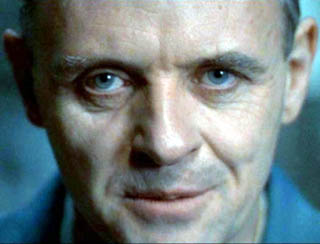
HANNIBAL -
A play on words, and gruesome acts, but many revere Lecter's
moral compass, seeing him as the hero against those who
deserve some kind of punishment for crimes various. Truly,
such a fate is deserved by some politicians who financially
rape the electorate they are elected to represent - and
so-called officers of the law who frame dissidents, acting as
political puppets for their masters. The tongue-in-cheek
series of films revolves around the acting prowess of Anthony
Hopkins and his ability to ooze evil on command, contrasted
against the murders of other villains with vastly different
agendas.
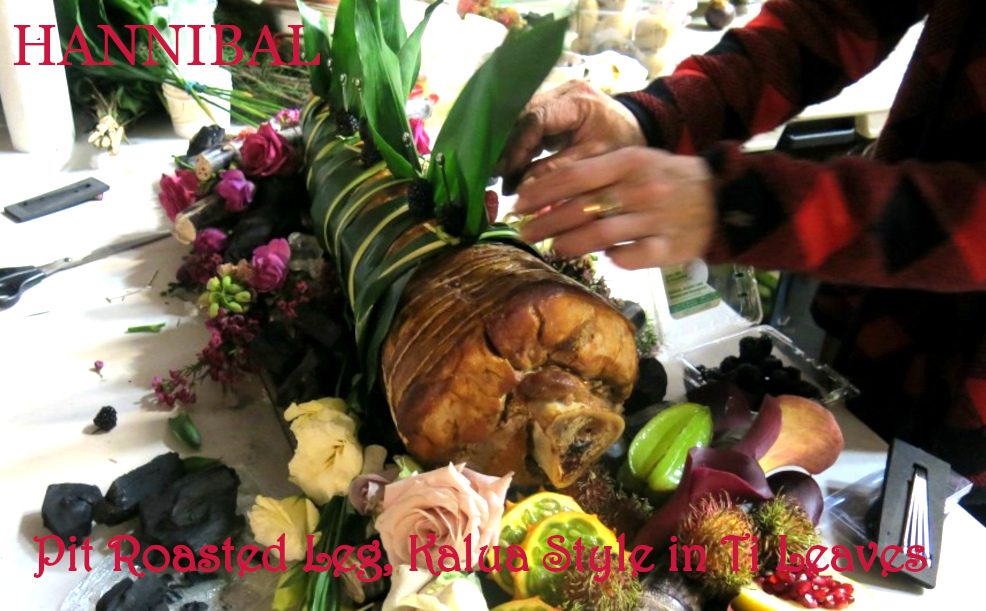
FEEDING
HANNIBAL - After three seasons of masterfully cooked limbs and beautifully filmed cooking scenes, NBC’s dark drama Hannibal came to a close in
2015. For a franchise about a sociopathic psychologist who murders and serves his kills to honored guests, Hannibal is the most food-centric adaptation of Thomas Harris’s four-part novel series. (Celebrity chef José Andrés served as the show’s culinary consultant.) With mouthwatering shots of dishes like foie gras au
torchon, beggar’s clay chicken, south Indian kudal, whole ortolans and stuffed heart (from what or whom, we’ll never know), the program features the same visual prestige of visually stunning cooking shows like Mind of a Chef and Chef’s Table. While this delectable drama has been put to rest, we’re not done obsessing over it, and neither is the show’s food stylist, Janice
Poon. Her head is still deep in the Hannibal universe as she’s working on the show’s official cookbook, Feeding Hannibal: A Connoisseur’s Cookbook. Excitement ensues.
Poon’s Hannibal-themed cookbook featureS all the dishes seen on the show and some special never-before-seen goodies — all human-free, she assures us. Yes, there will be a recipe for osso
buco, but it will be made with veal shank (or you can opt for Poon’s vegetarian version) instead of somebody’s leg.
Poon says the book relies heavily on looks, just as Dr. Hannibal Lecter
(Mads Mikkelsen) himself would have wanted it.
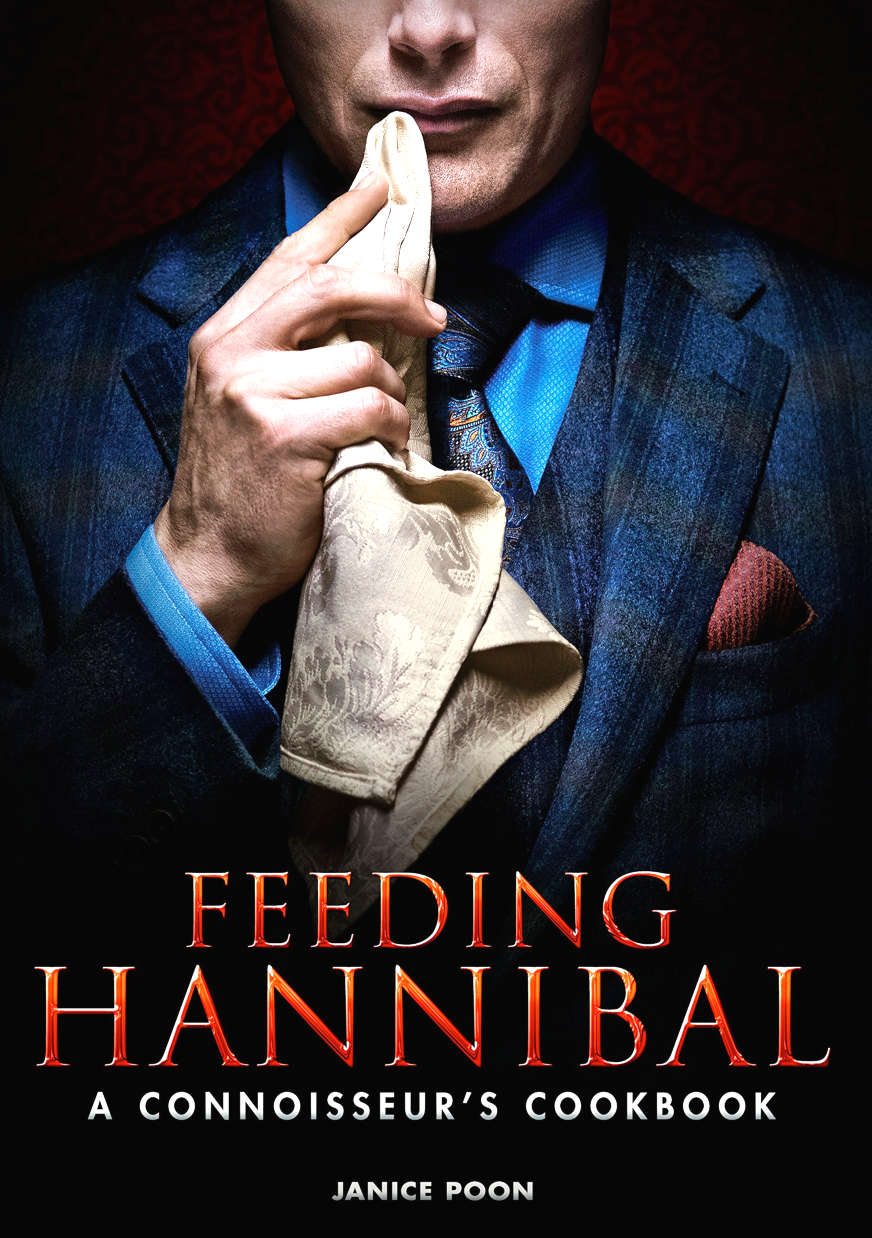

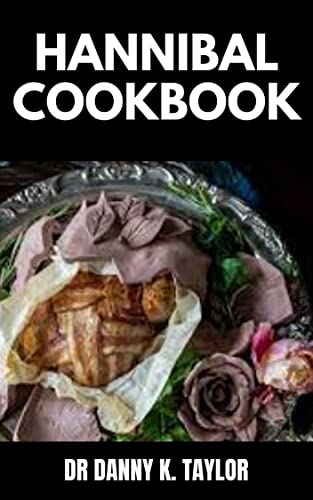
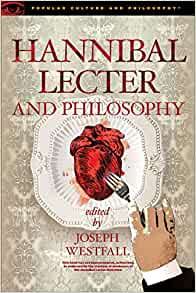
COOKERY
BOOKS - At least three 'Hannibal' cook books are available
on Amazon, with another (Hannibal Lecter and Philosophy) where
16 philosophers come at Hannibal the way he comes at his victims
-from unexpected angles and with plenty of surprises. Does it make any difference morally that a killer eats his victims? Can a murder be a work of art? Several chapters look at the mind of this proud and accomplished killer, psychiatrist, and gourmet cook. Is he a sociopath or a psychopath?
POLITICAL
VULTURES & CANNIBALISM
Cannibalism (the eating of human flesh by a human being) is considered to be one of the
most disgusting crimes a person can commit in a modern
society. We become conditioned to that, the same as using a
porcelain bowl to defecate. Where once conditioned, civilised humans
almost cannot imagine how we managed in the woods without
toilet paper.
But,
political cannibalism is a new form of man eating
man in modern times, also involving financial slavery, but it's
more than financial slavery. It is feasting on the carcass of
a system, its electorate, using policies and creating
policies
for that purpose, to pick the bones clean.
Political
cannibals legally stifle and stealth-tax the electorate, so
that they have no choice but to continue in a system that is
designed to work them to death, with little in return. This is
to boost the coffers of those in privileged positions.
The
concept can also be applied, country against country, and let
us not forget the infill vultures, that bring nothing to the
party, other than policies to pick the bones of the electorate
clean. In this case the economies of international neighbours.
Political
vultures surround cannibal chiefs to eat the flesh of the
electorate, playing havoc with the policies of their countries,
to enable them to gorge off their citizens and
then target the bones of other countries.
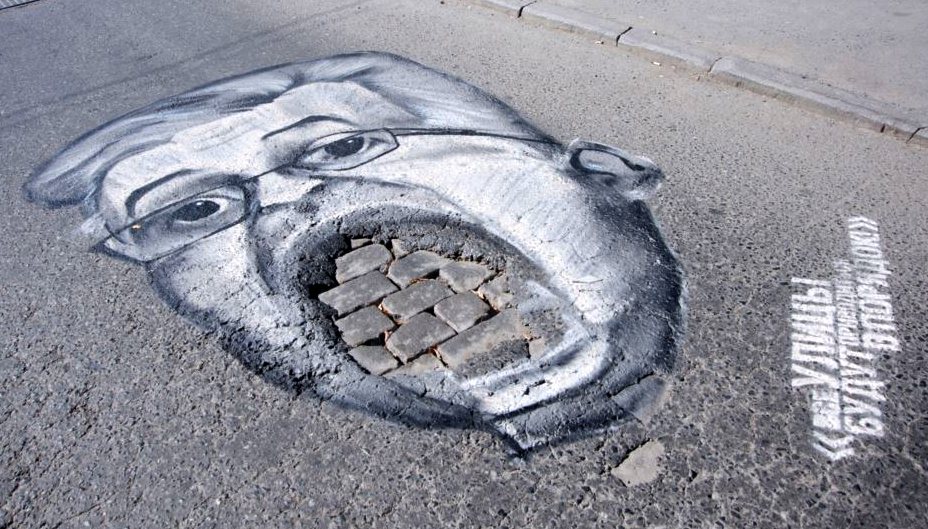
G20
VULTURES
Vultures by design prey on the weak, dead or dying. The living
(those who challenge policies) are a threat to the vultures
and must be suppressed, by denial of any effective remedy (for
example).
Vultures can only cannibalize they do not generate ideas, as they suffer from
a serious lack of imagination and allergy to work.
Political vultures
dislike change, as they continue to grow fat from their labour
force. Previously, military regimes were their sanctuary and breeding
grounds, but unless they can generate conflicts to justify
tanks and battleship, they take refuge in political parties,
citing the threat of war as reasons to keep on picking the
carcass of the nation clean.
Whereas, change is dynamic; it propels us into a new world leaving
redundant status-quos behind. It achieves by overcoming
present challenges to the outdated and a vision for the future.
The vultures in the G20,
or Global
Group of Twenty, are feeding off the carcasses of weaker United Nation's
members. They use their might to subdue military underlings. While they
grown personally rich as heads of powerful administrations,
including poisoning people with carcinogenic greenhouse
gases, that cause lung
cancer.
While spouting Sustainability
Development Goals, to look good, but never actually acting
to make it happen.
WHY
WE STOPPED EATING EACH OTHER
Human cannibalism waned when thinkers devised better options to feed themselves.
The thinkers developed better tools to hunt wild animals
alongside farming for food, trawlers, and the factory like
domestication of animals to eliminate the need to hunt,
favouring convenient slaughter. See battery hens as an
example.
The
surplus of food thus generated meant that eating the dead was no longer required.
Human corpses were buried with dignity and taken off the menu.
Cannibalism
is yet to rear its head again, but is a hungry person in
waiting. The clock is ticking against a population that
exceeds the ability of planet
earth to supply food sustainably. At this point the
political cannibals and vultures represent a food source to
the electorate they have been milking - bereft of merit,
reliant only on control. An obvious choice and means to vent
anger against poor leadership.
But,
control is only theirs with food security - and that security
is reliant on merit that is slipping away before their eyes.
In the real world you deliver or perish. Sir Winston Churchill the hero of the World War-II was defeated in the elections that
followed peace.
Sir
Winston was not eaten, simply put out to pasture, but then
there was no food shortage in his time, nor global
warming!
TEN
CASES OF (SUSPECTED) POLITICAL CANNIBALISM
10. Lon Nil Cooked And Eaten By Angry Cambodian Mob
In 1970, a coup took place in Cambodia that removed Prince Norodom Sihanouk as the head of state and installed Cheng Heng. Directly below him was his prime minister, Lon Nol, who became head of state in 1972.The coup was littered with casualties on both sides. One of the highest-profile deaths was that of Lon Nil—Lon Nol’s brother. It occurred on March 28, 1970, as a direct result of Sihanouk’s public decree for Cambodians to revolt against the country’s new governing power.This led to riots within the city of Kampong Cham. As a result, Lon Nol sent his brother to scope out the situation. Soon after arriving, Lon Nil was beaten to death by a mob of Sihanouk loyalists in a central marketplace. It’s believed that his chest was ripped open and his liver removed and prepared in a nearby Chinese
restaurant. Members of the mob then ate the organ, apparently to “express their extreme anger” toward Lon Nol. It’s also been suggested that there were spiritual reasons for the cannibalism. The Khmer Rouge often ate human flesh, believing the liver to be a particularly potent source of strength.Eventually, Lon Nol was successful in suppressing the demonstrations in Kampong Cham. However, the Khmer Rouge seized power in Cambodia in 1975, sending Nol into exile.
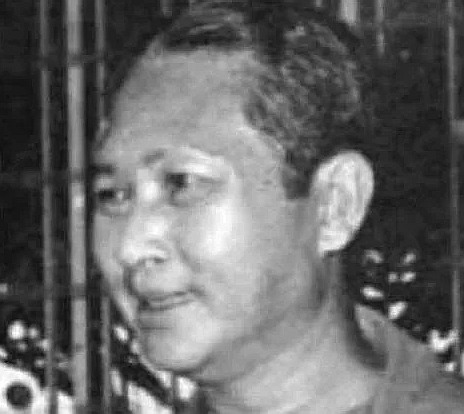
Liver Pâté
-
9. Johan And Cornelis De Witt Ambushed And Eaten By Dutch Peasants
In Dutch history, there was a year so bad that it’s broadly referred to as Rampjaar. In English, it’s the disaster year, marked on the calendar as 1672. At the time, the man at the top of the Dutch political totem pole was Johan de Witt. Along with his brother, Cornelis, Johan was largely blamed for the crisis.On June 21, 1672, Johan was badly wounded in a knife attack. He was removed from office that August. Soon after, Cornelis was accused of plotting to assassinate Willem III of the House of Orange. Cornelis was arrested on treason charges and, after initial torture, ordered into exile. When Johan went to visit Cornelis in prison shortly before his planned departure, the duo was savagely beaten and shot by an organized militia. Their brothers’ bodies were left on display for the general public. It’s strongly believed that the frenzied mob ripped the de Witt brothers to shreds and then ate the body parts, including the men’s livers and eyes.

LET'S
GO DUTCH -
8. Victor Biaka Boda Wanders Off The Road And Is Never Seen Again
Victor Biaka Boda was elected to the French Senate in 1948, representing the Democratic Party of Cote d’Ivoire. Soon after his election, the party was actively targeted by the overseas French powers and suppressed.Most likely, the date of Boda’s death was January 28, 1950. However, the circumstances of his demise remain a broader mystery. It’s known that his car broke down while traveling through the city of Bouafle. While his driver made the necessary repairs, Boda wandered off. He never returned. Boda’s possessions, along with bones, were found that November.The remains were never positively identified as Boda’s. However, it’s been popularly speculated that he was eaten by his constituents. This appears to have originated from a satirical article in a French newspaper, suggesting that the whole thing could be made up. Boda did die, though. So something did happen when he wandered off the road. His death was officially recorded in 1953.
......
7. Jean-Bedel Bokassa Accused Of Keeping Enemies’ Corpses Hung Up In Cold Storage
Jean-Bedel Bokassa ruled over the Central African Republic (briefly renamed the Central African Empire) from 1966 until 1979, when he was overthrown. After spending seven years exiled in France, Bokassa returned to face trial.His rap sheet is long and bloody, including the murder of over 100 schoolchildren and acts of cannibalism. Bokassa downplayed the charges, testifying,
“I’m not a saint. I’m just a man like everyone else.”
David Dacko was overthrown by Bokassa and then reinstated after Bokassa’s reign. Dacko said that human flesh had been found in Bokassa’s fridge,
“trussed up and ready for roasting.”
Ultimately, charges of cannibalism couldn’t be proven beyond a reasonable doubt. However, Bokassa was convicted of all other charges and sentenced to death.In 1988, the decision was overturned by President Kolingba, who commuted Bokassa’s sentence to life imprisonment in solitary confinement. A general amnesty for all prisoners was declared in 1993, making Bokassa a free man once again.
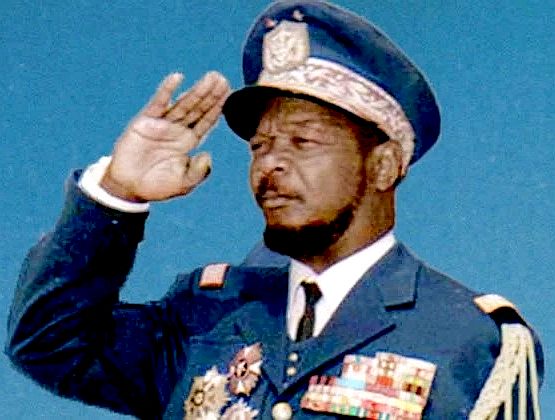
COOLER
-
6. Samuel Doe Dismembered To Prove That He Wasn’t Protected By Black Magic
Samuel Doe was the president of Liberia from 1980 to 1990. He seized power through a coup d’etat, which resulted in the swift death of then-President William Tolbert Jr. The men in Tolbert’s inner circle were displayed in their underwear before their public executions.To stay in power, Doe is believed to have rigged elections and ordered the massacre of over 600 people inside a church. He also publicly supported America’s Cold War policies and severed Liberia’s ties with both Libya and the Soviet Union. In return, Doe received US financial aid.President Doe was overthrown in 1990 during another coup. He was captured and videotaped in his underwear as still-active Liberian politician Prince Johnson sat at a desk, drinking beer. Johnson ordered his men to cut off Doe’s ears, fingers, and toes to demonstrate that, contrary to popular belief, he was not protected by black magic. Then Doe was
decapitated. Allegations persist that Johnson and his men ate parts of Doe’s body at some point. However, Johnson, who now serves as senior senator from Nimba County, has strongly denied the allegations. He’s quoted as saying, “The Nimbaians are not cannibals. Even if I was a cannibal, I did not eat Doe because he was embalmed with chemicals for 25 years.”
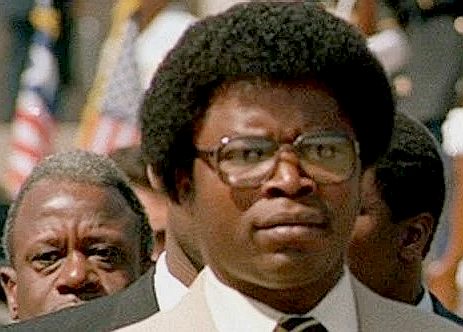
BLACK
MAGIC -
5. Teodoro Obiang Nguema Mbasogo Accused Of Wanting To Eat His Enemies’ Testicles
Teodor Obiang Nguema Mbasogo has served as president of Equatorial Guinea since 1979. Naturally, for one man to lead for that long, there have been strong elements of a dictatorship. Opposition is routinely suppressed. In fact, Equatorial Guinea only has one proper political party—Mbasogo’s Democratic Party of Equatorial Guinea.No other parties are allowed to gain momentum. Mbasogo is quoted as saying, “What right does the opposition have to criticize the actions of a government?”In 2003, one of President Mbasogo’s aides declared on national radio, “He can decide to kill without anyone calling him to account and without going to hell because it is God Himself, with whom he is in permanent contact, and who gives him this strength.” During his nearly 40-year reign, Mbasogo has tortured and killed a lot of people.Severo Moto, an exiled political enemy, was the first man to popularize the rumors of Mbasogo’s cannibalism. On a Spanish radio show in 2004, Moto said that Mbagoso believes he gains strength from eating his enemies. Moto told the show’s host, “Obiang wants me to go back to Guinea and eat my testicles. That’s clear.”

GONADS
-
4. Charles Taylor Accused Of Using Cannibalism As A Demoralization Tactic
Charles Taylor was president of Liberia from 1997 until 2003. While in office, Taylor faced strong foreign accusations of crimes against humanity and war crimes. Most were believed to have taken place during the Sierra Leone Civil War.Following his extradition from Nigeria in 2006, Taylor was subjected to a lengthy trial in which he was accused of eating human flesh and ordering others to do the same to terrify and demoralize his enemies. Taylor categorically denied the accusations:
“It is sickening. You must be sick to believe it.”
After he was found guilty in 2012 of terrorism, murder, rape, and more, Taylor was sentenced to 50 years in prison. The presiding judge stated, “The accused has been found responsible for aiding and abetting, as well as planning, some of the most heinous and brutal crimes recorded in human history.”

......
3. General Butt Naked Drank A Lot Of Human Blood
In the early 1990s, Joshua Milton Blahyi (aka General Butt Naked) led a mercenary unit in the First Liberian Civil War. They were known as the Butt Naked Brigade. As the name suggests, almost everyone fought in the nude. The few members of the brigade who weren’t in the buff wore women’s clothing. Also, they were incredibly
high. With his brigade known for its exceptional brutality, Butt Naked described a typical
day:
"Before leading my troops into battle, we would get drunk and drugged up, sacrifice a local teenager, drink the blood, then strip down to our shoes and go into battle wearing colorful wigs and carrying imaginary purses we’d looted from civilians. We’d slaughter anyone we saw, chop their heads off, and use them as soccer balls. We were nude, fearless, drunk yet strategic."
Butt Naked and his fighters believed that human sacrifices, the consumption of flesh and blood, and the soldiers’ nakedness protected them from bullets.General Butt Naked converted to Christianity in 1996 and has expressed remorse for his actions. He’s also stated his belief that satanic powers controlled him at the time and made him do things beyond his control.

BUTT
-
2. Idi Amin Suspected Of Engaging In Kakwa Blood Rituals
Idi Amin was president of Uganda from 1971 to 1979. During that time, he gained notoriety for his manicured image of buffoonery, which diluted the broad horrors of his regime. It’s estimated that up to 500,000 people were killed during Amin’s eight-year reign as president.His father was Kakwa—a Ugandan ethnic group who used to practice blood rituals during which flesh was cut from the body of a dead victim and eaten to decrease the power of the person’s vengeful spirit.Idi Amin observed the tradition in a unique way, claiming to keep human livers in his fridge. He remarked, “It is customary in Kakwa culture to eat the enemy’s liver to cleanse the sin of murder.” When asked about rumors of cannibalism, Amin often deflected the question with characteristic humor. In one instance, he said, “I don’t like human flesh. It’s too salty for me.”
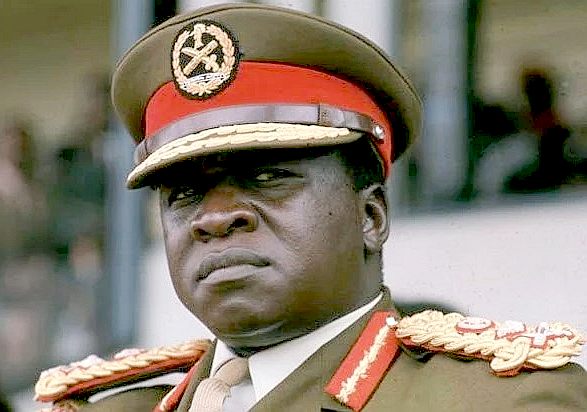
......
1. Joseph Kony Abducts Children And Forces Them To Engage In Cannibalism
Joseph Kony is the leader of the Lord’s Resistance Army (LRA), which is mostly known for its operations in Uganda. Kony believes that he is God’s spokesperson and sees his mission in life as turning Uganda into a theocratic state based on the Ten Commandments. Kony also uses his professed religious beliefs to excuse an outrageously long list of atrocities for which he’s responsible.Former LRA officer Francis Ongom is quoted as saying, “He has found Bible justifications for killing witches, for killing pigs because of the story of the Gadarene swine, and for killing people because God did the same with Noah’s flood and Sodom and Gomorrah.”The LRA operates through a system of indoctrination, kidnapping young children and forcing them to commit horrific acts such as cannibalism. That includes drinking the blood of the LRA’s enemies and eating human flesh. Through these acts, inhibitions are lowered as well as the perceived chances of acceptance back into society. Pamela Aber was abducted and held by the LRA for five months before she managed to escape. According to Aber, she and her fellow prisoners were told to bite to death a 14-year-old girl who had attempted to escape:We started biting her, but she did not die. When we were biting her, she was pleading to the rebels, saying they should forgive her and that she would not escape again. Later, we were all told to beat her with a log, one after the other, until she died. Kony’s power has reportedly diminished in recent years. It’s been reported that several thousand fighters were under Kony’s command at the LRA’s peak. Now there’s thought to be fewer than 100.
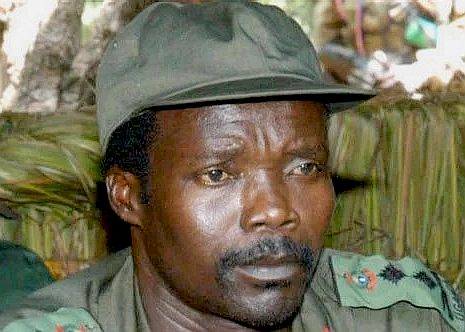
A
HISTORY OF CANNIBALISM
GUANGXI MASSACRE, CHINA
There have been some reports of cannibalism for ideological reasons during the Cultural Revolution and Great Leap Forward. The most well documented example is in the village of Wuxuan, Guangxi Autonomous Region where in the local officials began to practise cannibalism between May and July 1968 during the Cultural Revolution, resulting in the imprisonment of 15 local officials. Although the Party and the relatives of the victims are aware of this, it has yet to be made public in China. In 1986 and 1988, Zheng Yi (郑义), a former Red Guard and the author of Scarlet Memorial, went down to Guangxi where he obtained documents detailing the cannibalism. "For the first time in our long history Chinese ate people, not because there was a famine and they were starving to death, but for political reasons. I think thousands participated in the cannibalism and at least many hundreds were eaten. The Party knows all about it," said Zheng. According to Cheng, hundreds of men, women, and children deemed enemies of the Revolution were killed and eaten by the perpetrators, who even gave comments on the best way of preparing the meat – apparently by broiling, not boiling.
was a series of events involving lynching and direct massacre in Guangxi during the Cultural Revolution (1966-1976). The official record shows an estimated death toll from 100,000 to 150,000. Methods of slaughter included beheading, beating, live burial, stoning, drowning, boiling, disemboweling, and more. In certain areas including Wuxuan County and Wuming District, massive human cannibalism occurred even though no famine existed; according to public records available, at least 137 people—perhaps hundreds more—were eaten by others and at least thousands of people participated in the cannibalism.
According to Song Yongyi (宋永毅), a Chinese historian who worked at the California State University, Los Angeles:
Independent researchers in Guangxi counted a total of 421 people who were eaten in a single county. But there were reports of cannibalism across 27 counties in Guangxi; that's two-thirds of all the counties in Guangxi. There was one man who was said to be in the so-called fifth category, who was beaten to death where he stood. He had two kids, one of 11 and one of 14. The local officials and armed militia said that it was important to eradicate such people, and so they not only killed those two children: they ate them too. This took place in Pubei county, Guangxi, where 35 people were killed and eaten in total. Most of them were rich landowners and their families. There was one landowner called Liu Zhengjian whose entire family was wiped out. He had a 17-year-old daughter, Liu Xiulan, who was gang-raped by nine people [for 19 times] who then ripped open her belly, and ate her liver and breasts. There were so many incidents like this.
According to Frank Dikötter, Chair Professor of Humanities at the University of Hong Kong, Senior Fellow at Hoover Institution of Stanford, and winner of the 2011 Samuel Johnson Prize:
Throughout 1967 but also '68, there are factions in the countryside that start not just eliminating each other physically, but literally in a couple of small towns they start ritualistically eating each other. In other words, it is not enough to eliminate your class enemy. You have to eat his heart, so there are very well-documented cases of ritual cannibalism.
There was a hierarchy in the consumption of class enemies. Leaders feasted on the heart and liver, mixed with pork, while ordinary villagers were allowed only to peck at the victims’ arms and thighs.
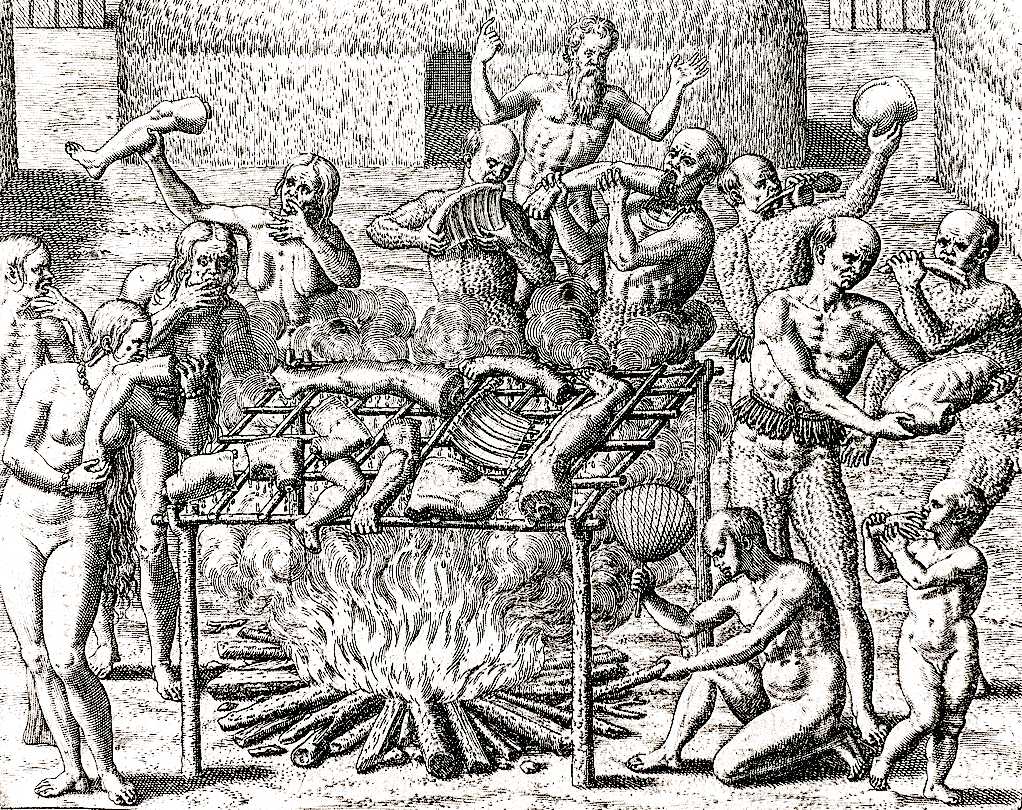
CARIB ISLAND, LESSER ANTILLES
The Island Carib people of the Lesser Antilles, from whom the word "cannibalism" is derived, acquired a long-standing reputation as cannibals after their legends were recorded in the 17th century. Some controversy exists over the accuracy of these legends and the prevalence of actual cannibalism in the culture.
Cannibalism was practised in New Guinea and in parts of the Solomon Islands, and flesh markets existed in some parts of Melanesia. Fiji was once known as the "Cannibal Isles". Cannibalism has been well documented in much of the world, including Fiji, the Amazon Basin, the Congo, and the Māori people of New Zealand. Neanderthals are believed to have practised cannibalism, and Neanderthals may have been eaten by anatomically modern humans. Cannibalism was also practised in ancient Egypt, Roman Egypt and during famines in Egypt such as the great famine of 1199-1202.
SOUTH AMERICA
Accusations of cannibalism helped characterize indigenous peoples as "uncivilized", "primitive", or even "inhuman." These assertions promoted the use of military force as a means of "civilizing" and "pacifying" the "savages". During the Spanish conquest of the Aztec Empire and its earlier conquests in the Caribbean there were widespread reports of cannibalism, justifying the conquest. Cannibals were exempt from Queen Isabella's prohibition on enslaving the indigenous. Another example of the sensationalism of cannibalism and its connection to imperialism occurred during Japan's 1874 expedition to Taiwan. As Eskildsen describes, there was an exaggeration of cannibalism by Taiwanese indigenous peoples in Japan's popular media such as newspapers and illustrations at the time.
This Horrid Practice: The Myth and Reality of Traditional Maori Cannibalism (2008) by New Zealand historian Paul Moon received a hostile reception by many Maori, who felt the book tarnished their whole
people. The title of the book is drawn from the 16 January 1770 journal entry of Captain James Cook, who, in describing acts of Māori cannibalism, stated "though stronger evidence of this horrid practice prevailing among the inhabitants of this coast will scarcely be required, we have still stronger to give."
AFRICA
Cannibalism has recently been both practised and fiercely condemned in several wars, especially in Liberia and the Democratic Republic of the Congo. It was still practised in Papua New Guinea as of 2012, for cultural reasons and in ritual and in war in various Melanesian tribes. Cannibalism has been said to test the bounds of cultural relativism because it challenges anthropologists "to define what is or is not beyond the pale of acceptable human behavior". Some scholars argue that no firm evidence exists that cannibalism has ever been a socially acceptable practice anywhere in the world, at any time in history, although this has been consistently debated against.
Cannibalism has occasionally been practiced as a last resort by people suffering from famine, even in modern times. Famous examples include the ill-fated Donner Party (1846–47) and, more recently, the crash of Uruguayan Air Force Flight 571 (1972), after which some survivors ate the bodies of the dead. Additionally, there are cases of people suffering from mental illness engaging in cannibalism for sexual pleasure, such as Jeffrey Dahmer and Albert Fish.
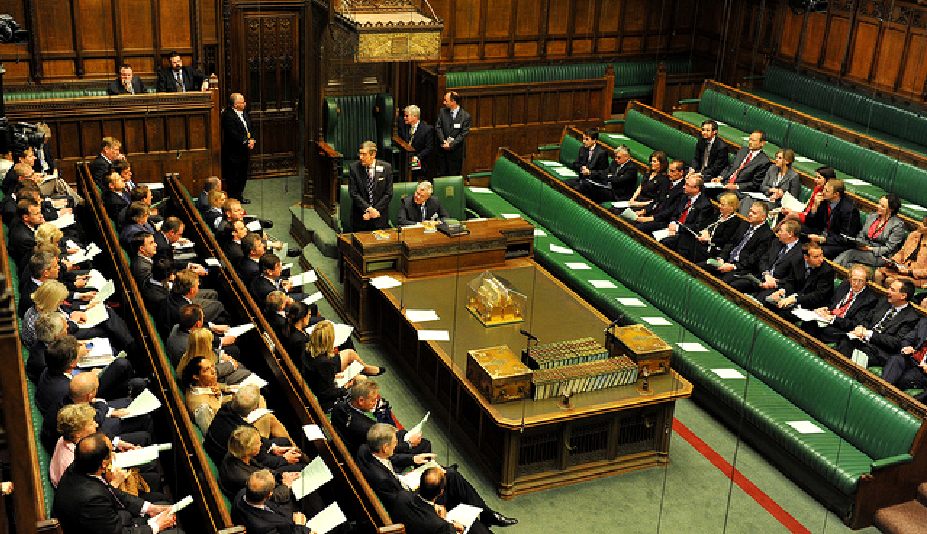
It
all looks very plausible, but behind closed doors the civil
servant policy makers are working out how to boil the bones of
the electorate. The UK is another country dressed up to look
like human rights supporters, but in reality there is no
Article 13 effective remedy to correct injustices.
WORLD WAR TWO
Many instances of cannibalism by necessity were recorded during
World War
II. For example, during the 872-day Siege of Leningrad, reports of cannibalism began to appear in the winter of 1941–1942, after all birds, rats, and pets were eaten by survivors. Leningrad police even formed a special division to combat cannibalism.
Some 2.8 million Soviet POWs died in Nazi custody in less than eight months during 1941–42. According to the USHMM, by the winter of 1941, "starvation and disease resulted in mass death of unimaginable proportions". This deliberate starvation led to many incidents of cannibalism.
Following the Soviet victory at Stalingrad it was found that some German soldiers in the besieged city, cut off from supplies, resorted to cannibalism.[ Later, following the German surrender in January 1943, roughly 100,000 German soldiers were taken prisoner of war (POW). Almost all of them were sent to POW camps in Siberia or Central Asia where, due to being chronically underfed by their Soviet captors, many resorted to cannibalism. Fewer than 5,000 of the prisoners taken at Stalingrad survived captivity.
Cannibalism took place in the concentration and death camps in the Independent State of Croatia (NDH), a Nazi German puppet state which was governed by the fascist Ustasha organization, who committed the Genocide of Serbs and the Holocaust in NDH. Some survivors testified that some of the Ustashas drank the blood from the slashed throats of the victims.
JAPAN
The Australian War Crimes Section of the Tokyo tribunal, led by prosecutor William Webb (the future Judge-in-Chief), collected numerous written reports and testimonies that documented Japanese soldiers' acts of cannibalism among their own troops, on enemy dead, as well as on Allied prisoners of war in many parts of the Greater East Asia Co-Prosperity Sphere. In September 1942, Japanese daily rations on New Guinea consisted of 800 grams of rice and tinned meat. However, by December, this had fallen to 50 grams.:78–80 According to historian Yuki Tanaka, "cannibalism was often a systematic activity conducted by whole squads and under the command of officers".
In some cases, flesh was cut from living people. A prisoner of war from the British Indian Army, Lance Naik Hatam Ali, testified that in New Guinea: "the Japanese started selecting prisoners and every day one prisoner was taken out and killed and eaten by the soldiers. I personally saw this happen and about 100 prisoners were eaten at this place by the Japanese. The remainder of us were taken to another spot 80 kilometres (50 miles) away where 10 prisoners died of sickness. At this place, the Japanese again started selecting prisoners to eat. Those selected were taken to a hut where their flesh was cut from their bodies while they were alive and they were thrown into a ditch where they later died."
Another well-documented case occurred in Chichi-jima in February 1945, when Japanese soldiers killed and consumed five American airmen. This case was investigated in 1947 in a war crimes trial, and of 30 Japanese soldiers prosecuted, five (Maj. Matoba, Gen. Tachibana, Adm. Mori, Capt. Yoshii, and Dr. Teraki) were found guilty and hanged. In his book Flyboys: A True Story of Courage, James Bradley details several instances of cannibalism of
World War II Allied prisoners by their Japanese captors. The author claims that this included not only ritual cannibalization of the livers of freshly killed prisoners, but also the cannibalization-for-sustenance of living prisoners over the course of several days, amputating limbs only as needed to keep the meat fresh.
There are more than 100 documented cases in Australia's government archives of Japanese soldiers practising cannibalism on enemy soldiers and civilians in New Guinea during the war. For instance, from an archived case, an Australian lieutenant describes how he discovered a scene with cannibalized bodies, including one "consisting only of a head which had been scalped and a spinal column" and that "[i]n all cases, the condition of the remains were such that there can be no doubt that the bodies had been dismembered and portions of the flesh cooked". In another archived case, a Pakistan corporal (who was captured in Singapore and transported to New Guinea by the Japanese) testified that Japanese soldiers cannibalized a prisoner (some were still alive) per day for about 100 days. There was also an archived memo, in which a Japanese general stated that eating anyone except enemy soldiers was punishable by
death. Toshiyuki Tanaka, a Japanese scholar in Australia, mentions that it was done "to consolidate the group feeling of the troops" rather than due to food shortage in many of the cases. Tanaka also states that the Japanese committed the cannibalism under supervision of their senior officers and to serve as a power projection tool.
Jemadar Abdul Latif (VCO of the 4/9 Jat Regiment of the Indian Army and POW rescued by the Australians at Sepik Bay in 1945) stated that the Japanese soldiers ate both Indian POWs and local New Guinean people. At the camp for Indian POWs in Wewak, where many died and 19 POWs were eaten, the Japanese doctor and lieutenant Tumisa would send an Indian out of the camp after which a Japanese party would kill and eat flesh from the body as well as cut off and cook certain body parts (liver, buttock muscles, thighs, legs, and arms), according to Captain R U Pirzai in a The Courier-Mail report of 25 August 1945.
RUSSIA
In his book, The Gulag Archipelago, Soviet writer Aleksandr Solzhenitsyn described cases of cannibalism in 20th-century USSR. Of the famine in Povolzhie (1921–1922) he wrote: "That horrible famine was up to cannibalism, up to consuming children by their own parents — the famine, which Russia had never known even in Time of Troubles [in 1601–1603]".
During the dekulakization process in the USSR in the 1920s and 1930s, many deportees were forced to eat one another by genocidal Soviet authorities, e.g. on the Nazino island or during Holodomor.
During the 1930s, multiple acts of cannibalism were reported from Ukraine and Russia's Volga, South Siberian and Kuban regions during the Soviet famine of 1932–1933.
Survival was a moral as well as a physical struggle. A woman doctor wrote to a friend in June 1933 that she had not yet become a cannibal, but was "not sure that I shall not be one by the time my letter reaches you". The good people died first. Those who refused to steal or to prostitute themselves died. Those who gave food to others died. Those who refused to eat corpses died. Those who refused to kill their fellow man died. ... At least 2,505 people were sentenced for cannibalism in the years 1932 and 1933 in Ukraine, though the actual number of cases was certainly much higher.
Solzhenitsyn said of the Siege of Leningrad (1941–1944): "Those who consumed human flesh, or dealt with the human liver trading from dissecting rooms ... were accounted as the political criminals". And of the building of Northern Railway Labor Camp ("Sevzheldorlag") Solzhenitsyn reports, "An ordinary hard working political prisoner almost could not survive at that penal camp. In the camp Sevzheldorlag (chief: colonel Klyuchkin) in 1946–47 there were many cases of cannibalism: they cut human bodies, cooked and ate."
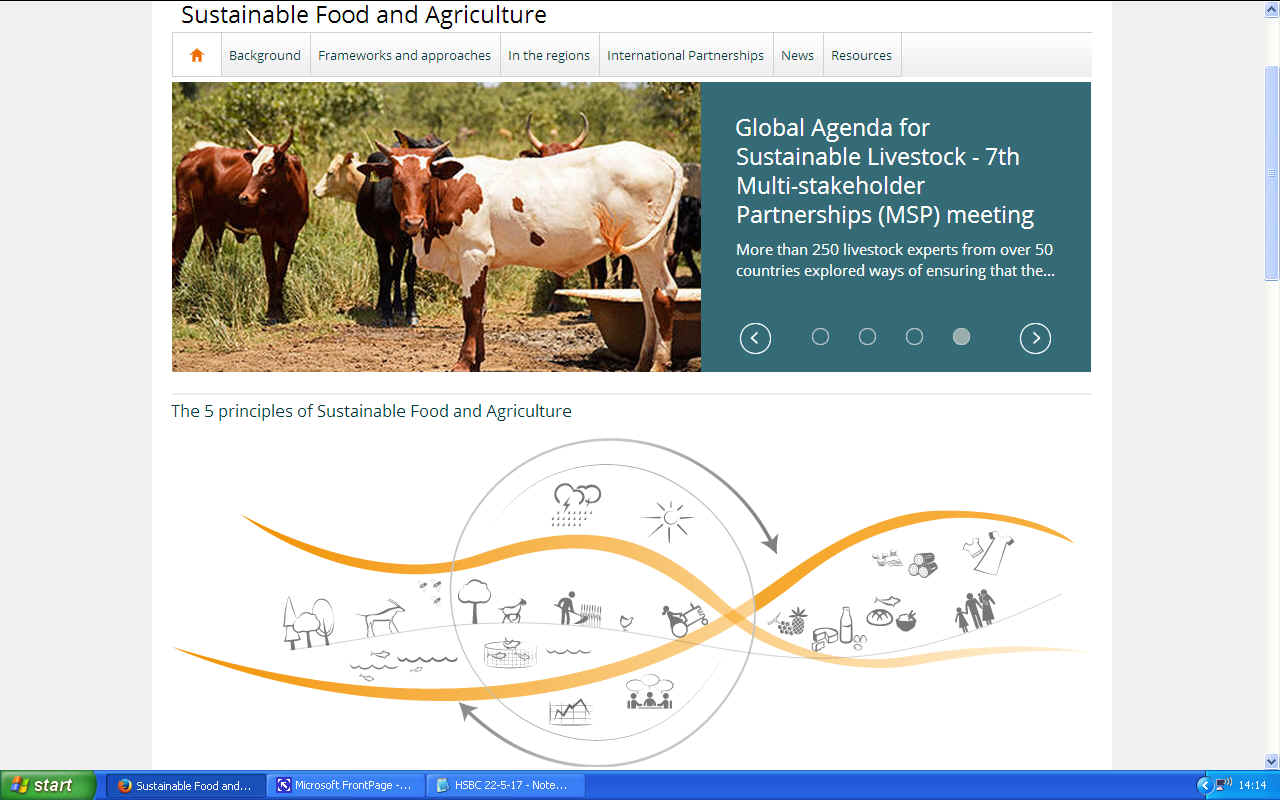
We
could soon be looking at humans in other villages, the same
way we look at cows grazing. They'll be long gone as the
fields turn into deserts, but other people will live much
longer, so representing a meal on the hoof.

No
longer a woman harvesting bananas, more like a roast meal in a
future where food is so scarce that the only meat to eat is
human.
LINKS
& REFERENCE
https://listverse.com/2018/01/22/10-suspected-cases-of-real-political-cannibalism/
https://nation.com.pk/29-Jul-2015/political-cannibalism
This
website is provided on a free basis as a public information
service. Copyright © Cleaner
Oceans Foundation Ltd (COFL) (Company No: 4674774)
2020. Solar
Studios, BN271RF, United Kingdom.
COFL
is a charity without share capital.
|





















